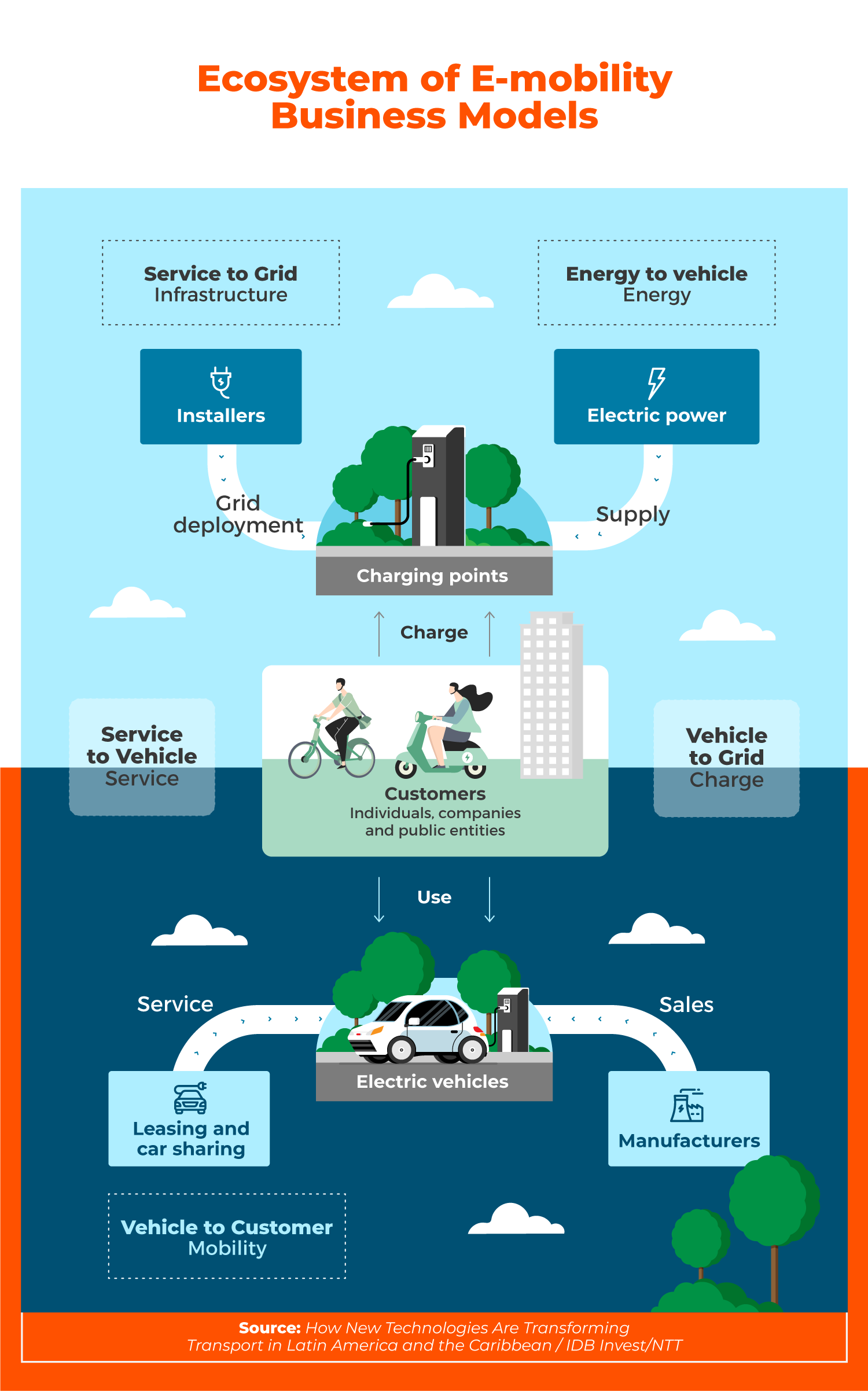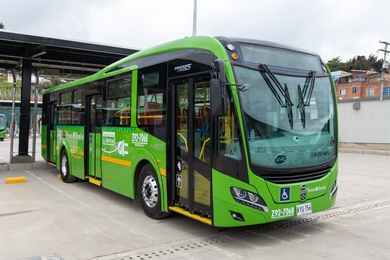Nine Transportation Challenges Technology Could Solve

The transportation sector is deemed strategic in Latin America and the Caribbean for its industrial significance, fundamental role in commerce, and pivotal role in citizens' mobility.
IDB Invest and NTT Data have conducted a series of investigations to deliver findings, insights, and recommendations on how new technologies are transforming various industries. As part of this series, the study "How New Technologies Are Transforming Transportation in Latin America and the Caribbean" highlights initiatives contributing to the transition to renewed mobility.
Additional reading
- Is Bikesharing The Future of Latin America’s Cities?
- Electric Buses Roll Out Challenges and Opportunities for Latin America and the Caribbean
Despite the sector's considerable challenges, these initiatives generate opportunities with a positive impact on the socio-economic environment. The new technological paradigm offers significant prospects to evolve operational methods and address transportation's major challenges.
Challenges such as congestion in urban mobility, the need for infrastructural improvements, and the environmental pollution resulting from population growth and private transportation use necessitate an accelerated search for solutions through the impetus of digital transformation.
Particularly noteworthy are nine challenges where technological enablers and innovation are the key to this necessary evolution:
- Connectivity with cities, encompassing improvements in infrastructure (roads, airports, loading docks, or ports) and the promotion of smart routes driven by enhanced information and external connectivity leveraging data and AI.
- Safety and cybersecurity applied to transportation or infrastructure, allowing for the smartification of stations, crowd controls through IoT, and real-time disaster collaborations based on predictive models.
- Accessibility or inclusion in public transportation, minimizing road accidents, or promoting intelligent signage.
- Sustainability and well-being can be achieved through the continuous exploration and utilization of new fuels like hydrogen, the electrification of new fleets of public and/or private vehicles, and encouraging public transportation use by promoting deterrent parking.
- Improve passenger experience, facilitate new payment methods through innovations like biometrics or increasingly secure payment gateways, enhance customer service through avatars, robots, or cognitive call centers, and hyper-personalize the journey through more attractive loyalty programs.
- Mobility as a service, providing first and last-mile solutions to citizens, shared mobility, favoring collaborative platforms and/or communities.
- Evolution of the ecosystem surrounding sector employees, facilitating digital tools to streamline tedious and costly tasks through gadgets like Hololens, gamification for training, artificial intelligence for efficient shift management, and the promotion of telecommuting with continuous improvement in digital workplaces.
- Operational efficiency through enhanced connectivity using digital twins, virtual, augmented, or mixed reality, and/or operations automation.
- Smart logistics and maintenance, enabling warehouse robotization or remote controls, asset traceability, and intelligent logistics solutions.

While technology and innovation offer opportunities for the evolution of the transportation sector in Latin America, their adoption depends on the nature of each territory, the maturity of the sector, and the quality of public policies.
From the perspective of private investment, the attraction of investment and countries' financial and political stability are also fundamental in implementing effective technological solutions to transportation challenges.
Latest posts
- Trending: Markets' Growing Appetite for Sustainability
- Will technology transform education? Certain conditions apply
LIKE WHAT YOU JUST READ?
Subscribe to our mailing list to stay informed on the latest IDB Invest news, blog posts, upcoming events, and to learn more about specific areas of interest.
Subscribe



